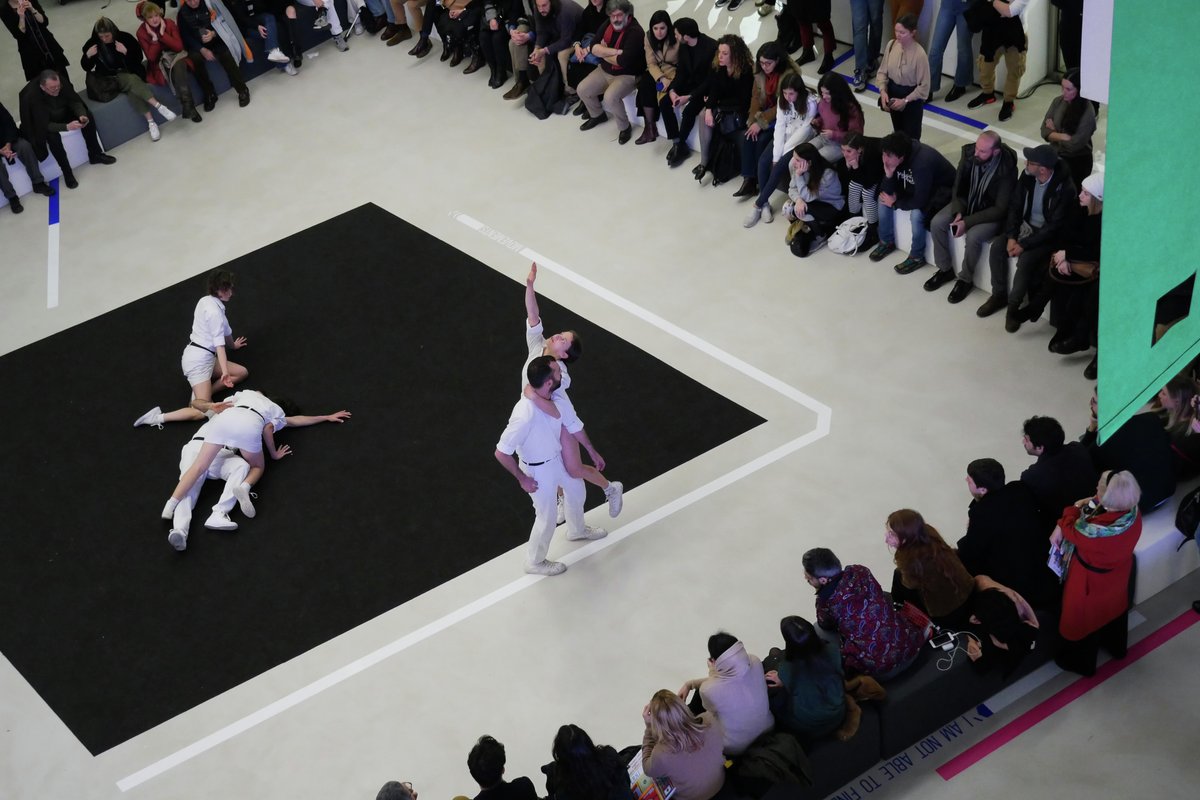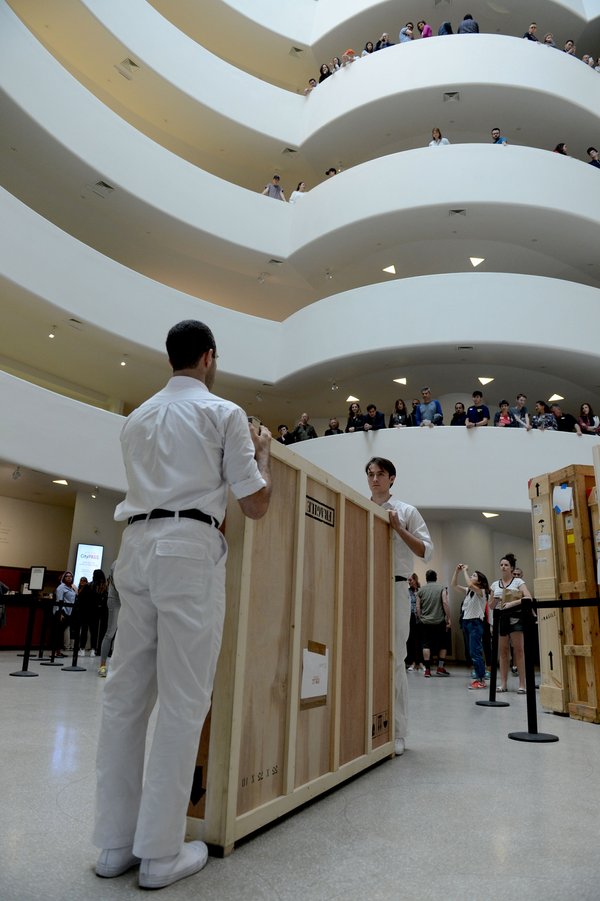From the Desk of…Public Movement

Public Movement, “Emergency Routine”, performed as part of The Independent Summit: Friendship | Solidarity | Alliances. MAXXI, Rome, Italy, 2020. Photo: Gianfranco Fortuna, courtesy Fondazione MAXXI.
In this interview, we speak with artist Dana Yahalomi of Public Movement, who is based in Tel Aviv, about urgent questions she is grappling with during a period of social distancing and stay at home orders internationally, due to the COVID-19 pandemic. Public Movement is a performative research body that investigates and stages political actions in public spaces. It studies and enacts public choreographies, forms of social order, and overt and covert rituals. At a time when the uses of public space is shifting in response to COVID-19, Dana rethinks how public arenas construct our social and physical bonds, and what new choreographies in public space could look like.
This interview was conducted in May 2020 as part of Artis’ series, From the Desk of…. In this series, we check in with artists, curators, and collectors about their recent projects, reflections on social distancing and quarantine, due to the COVID-19 pandemic, as well as how they are practicing, experiencing, and engaging with art.

Public Movement, “Emergency Routine”. Commissioned by Public Art Agency Sweden, 2019. Photo: Ricard Estay.
Tell us about a project you’re working on now. What kind of research are you doing to develop this project?
We are currently working on Emergency Routine, a public experiment about civic alliances and how they are performed between individuals and bodies in moments of danger. The work was originally commissioned by Public Art Agency Sweden for the festival, Choreographies of the Social, which took place in Stockholm in 2019, and was curated by Edi Muka. The point of departure for this project is Operation Stockholm 1961, claimed to be the world’s largest evacuation exercise performed in peacetime. Evacuations are a rupture in the daily corporeal conduct that manage the way we move. In these moments, bodies of individuals meet, touch and move together. The choreography of Emergency Routine involves five Public Movement members, with the participation of the audience, engaging in a civil practice of touch and care, leaning against, and on, one another, and exploring the physical aspect of being a public.
In 2020, we were invited to perform Emergency Routine in several cities, including Jerusalem and Miami. Due to the COVID-19 outbreak, we are now reformulating the work to address the same questions through different means. In the shadow of the pandemic, the ways we support others have shifted from the experience of physical proximity, to being defined by distance. The questions I am now facing are: how do we hold on to, and maintain, public bonds while keeping a safe distance? How do we perform solidarity and care in public under these present circumstances? This dilemma reflects a struggle for performance art more broadly, given the changing nature of public spaces.
Has your practice shifted in response to social distancing and quarantine regulations?
Public Movement creates live performances, mostly in public spaces, as a way to engage with social structures and political systems, all of which change on an ongoing basis. In this sense, our practice exists at the heart of what is now, and the unknown that may be. As our lives are reevaluated in response to the pandemic, I sense a need to suspend productivity. This forced pause is an opportunity to imagine what our future can become and what we want it to be.
Now is the time to rethink the way we live; to reflect and reimagine the economy and structures of globalization; to invest and reinvent systems of support, health, and care. I am wrapping my head around the social effects of physical distance. There is a false assumption that the home, or private space, is a safe place for all, as opposed to public facilities. But in Israel, for example, after two weeks of quarantine, there was a 700% increase in reported cases of child abuse and domestic violence. This statistic shows that quarantine guidelines disregard those essential elements of safety, care, and protection that exist in public arenas. Even in the field of visual arts, institutions moved quickly to protect themselves and produce adapted content, rather than thinking as part of a collective of cultural producers, that includes vulnerable individuals. I think that we should use this time to think collectively, to cherish the suspense we’re experiencing, and turn it into a space where a new “being” can come to life.

Public Movement, “Cross Section”, performed as part of Future Generation Art Prize, Pinchuk Art Centre, Kiev, Ukraine, 2014. Photo: PinchukArtCentre © 2014. Photographed by Sergey Illin and Alexander Pilyugin.
Is there anything, in particular, that you miss from life before social distancing?
My son’s kindergarten.
How are you staying connected to friends, family, and colleagues? What does community and solidarity mean to you nowadays?
Many people are now sharing their day to day experiences by uploading videos and images or circulating articles they read on social media platforms. However, for me, online sharing and presence do not translate into a sense of community and solidarity. This pandemic emphasizes how very fragile our bodies are, how precarious our abilities to support each other are, and how quickly our movements can be paralyzed. For Public Movement, it is crucial to imagine which public movements are possible and necessary to overcome the loss we’re experiencing, and to maintain a sense of vitality while dealing with COVID-19.
